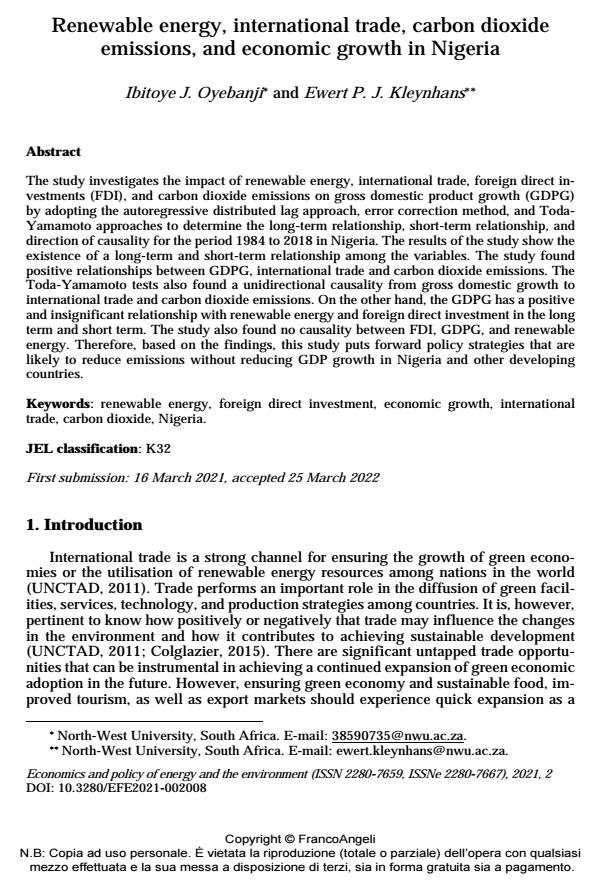Renewable energy, international trade, carbon dioxide emissions, and economic growth in Nigeria
Journal title ECONOMICS AND POLICY OF ENERGY AND THE ENVIRONMENT
Author/s Ibitoye J. Oyebanji, Ewert P. J. Kleynhans
Publishing Year 2022 Issue 2021/2
Language English Pages 23 P. 173-195 File size 226 KB
DOI 10.3280/EFE2021-002008
DOI is like a bar code for intellectual property: to have more infomation
click here
Below, you can see the article first page
If you want to buy this article in PDF format, you can do it, following the instructions to buy download credits

FrancoAngeli is member of Publishers International Linking Association, Inc (PILA), a not-for-profit association which run the CrossRef service enabling links to and from online scholarly content.
The study investigates the impact of renewable energy, international trade, foreign direct investments (FDI), and carbon dioxide emissions on gross domestic product growth (GDPG) by adopting the autoregressive distributed lag approach, error correction method, and Toda- Yamamoto approaches to determine the long-term relationship, short-term relationship, and direction of causality for the period 1984 to 2018 in Nigeria. The results of the study show the existence of a long-term and short-term relationship among the variables. The study found positive relationships between GDPG, international trade and carbon dioxide emissions. The Toda-Yamamoto tests also found a unidirectional causality from gross domestic growth to international trade and carbon dioxide emissions. On the other hand, the GDPG has a positive and insignificant relationship with renewable energy and foreign direct investment in the long term and short term. The study also found no causality between FDI, GDPG, and renewable energy. Therefore, based on the findings, this study puts forward policy strategies that are likely to reduce emissions without reducing GDP growth in Nigeria and other developing countries.
Keywords: renewable energy, foreign direct investment, economic growth, international trade, carbon dioxide, Nigeria.
Jel codes: K32
Ibitoye J. Oyebanji, Ewert P. J. Kleynhans, Renewable energy, international trade, carbon dioxide emissions, and economic growth in Nigeria in "ECONOMICS AND POLICY OF ENERGY AND THE ENVIRONMENT" 2/2021, pp 173-195, DOI: 10.3280/EFE2021-002008